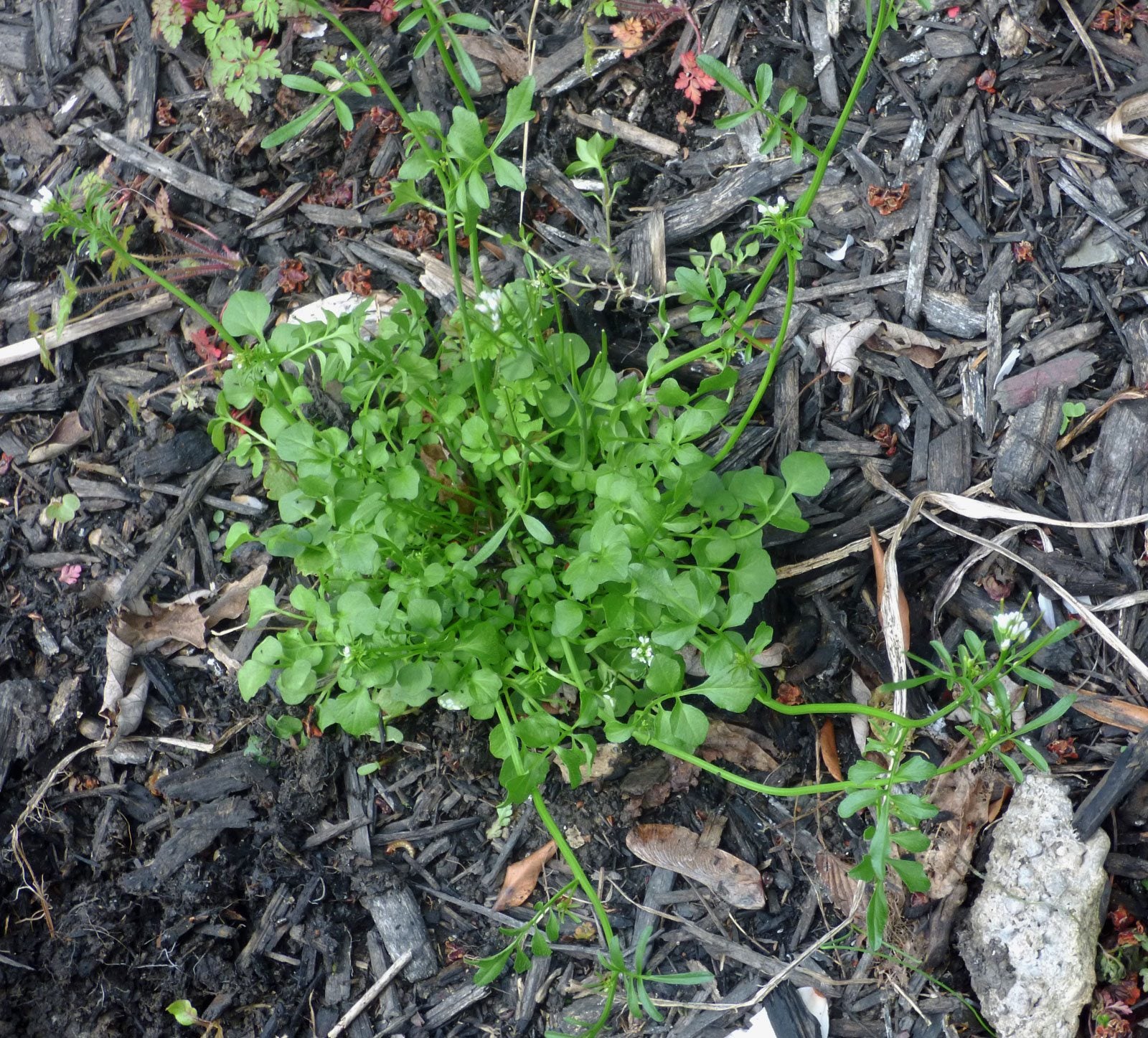Hairy Bittercress Killer: Learn More About Control For Hairy Bittercress


Late winter and spring signal growth of all plants, but especially weeds. Annual weed seeds overwinter and then burst into growth towards the end of the season. Hairy bittercress weed is no exception.
What is hairy bittercress? The plant is an annual weed, which is one of the earliest to sprout and form seeds. Control for hairy bittercress starts early in the season, before flowers turn to seed and get a chance to spread.
What is Hairy Bittercress?
Hairy bittercress weed (Cardamine hirsuta) is an annual spring or winter pest. The plant springs from a basal rosette and bears 3 to 9 inch (8-23 cm.) long stems. The leaves are alternate and slightly scalloped with the largest at the base of the plant.
Tiny white flowers develop at the ends of the stems and then turn into long seedpods. These pods split open explosively when ripe and fling seeds out into the environment. The weed prefers cool, moist soil and is most prolific after early spring rains.
The weeds spread quickly but their appearance reduces as temperatures increase. The plant has a long, deep taproot, which makes pulling them out manually ineffective. Control for hairy bittercress is cultural and chemical.
Preventing Hairy Bittercress in the Garden
This pesky weed is small enough to hide among your landscape plants. Its extensive seed expulsion means that just one or two weeds can spread quickly through the garden in spring.
Early control for hairy bittercress is essential to protect the rest of the landscape from an infestation. Prevent invasions into turf areas by encouraging good grass growth. The weeds easily infest thin or patchy areas. Apply several inches (8 cm.) of mulch around landscape plants to help prevent seeds from getting a foothold in your soil.
Gardening tips, videos, info and more delivered right to your inbox!
Sign up for the Gardening Know How newsletter today and receive a free copy of our e-book "How to Grow Delicious Tomatoes".
Cultural Control for Hairy Bittercress
Pulling out hairy bittercress weed usually leaves the root behind. The plant will re-sprout from healthy weeds and the problem persists. You can, however, use a long slim weeding tool to dig down and around the taproot and get all the plant material out of the ground.
Mowing will achieve control over time. Do it frequently enough that you remove the flower heads before they become seed pods. As temperatures get warmer, the plant will die naturally without having reproduced. That means fewer weeds the following season.
Chemical Hairy Bittercress Killer
Severe infestations of hairy bittercress weed will require chemical treatment. Herbicides applied post emergence need to have two different active ingredients. The ingredients must be 2-4 D, triclopyr, clopyralid, dicamba, or MCPP. These are found in broadleaf herbicide preparations known as two, three, or four-way treatments.
The higher number preparations will kill a wide range of weeds. The two-way herbicide should be sufficient for your purposes unless you have a field full of a variety of weed pests as well as the hairy bittercress weed. Apply your chosen herbicide in spring or fall.

Bonnie Grant is a professional landscaper with a Certification in Urban Gardening. She has been gardening and writing for 15 years. A former professional chef, she has a passion for edible landscaping.
-
 Zinnias On Repeat: 10 Glorious Cut-And-Come-Again Varieties For Endless Summer Bouquets
Zinnias On Repeat: 10 Glorious Cut-And-Come-Again Varieties For Endless Summer BouquetsThese zinnia varieties keep giving all summer, making them the perfect choice for dedicated cutting gardens – or just the occasional homegrown bouquet.
By Ellen Wells
-
 Create A Romantic Garden Straight Out Of Bridgerton: Regency Era Romance In Your Garden
Create A Romantic Garden Straight Out Of Bridgerton: Regency Era Romance In Your GardenTry some romantic garden ideas straight out of Bridgerton. Flowers and gardens in the Regency era were lush and charming and you can get the same look!
By Bonnie L. Grant